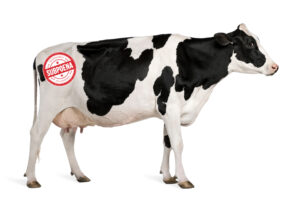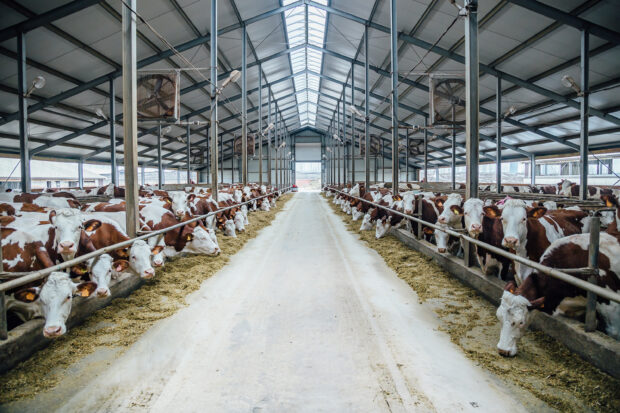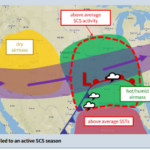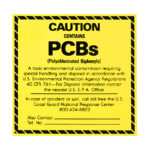Many insurers think they have climate casualty risk managed by virtue of avoiding writing the oil and gas industry or with limitations on their policies.
Executive Summary
The oil and gas industry may be an obvious target for climate change litigation, but it’s not the only large industrial target. Production of meat accounts for up to 20 percent of global emissions.Climate casualty risk is broader than this view indicates, with the primary and secondary effects of climate change creating risks across most sectors of the economy. The importance of this fact is made more salient because the latest reports from the International Panel on Climate Change make clear that we are quickly approaching a point of no return and that, even if we meet the targets established in the Paris Climate Accords, our world may look vastly different than it does today.
Climate activists and those most directly affected by climate change have both attempted to hold the oil and gas industry accountable for their emissions of greenhouse gasses (GHG) that are the largest drivers of climate change. The first round of cases, however, resulted in defeat for the plaintiffs and anybody else trying to use federal public nuisance law in the U.S. against the oil and gas industry. The Supreme Court’s decision in Connecticut v. AEP held that the Clean Air Act’s regulatory scheme “displaced” the federal common law of public nuisance, leaving plaintiffs without a viable legal theory.
Plaintiffs have shifted their efforts to state courts, hoping to evade “displacement,” and there are currently nearly two dozen cases pending in individual state courts alleging the same sort of public nuisance causes of action. If plaintiffs succeed at keeping these cases in state courts, they may be able to recover the costs of mitigating the effects of climate change.
Although the oil and gas industry remains the most obvious target for climate change litigation, it is far from the only large industrial target. Scientists have continued to elucidate the relative contribution of many industries to climate change and have recently determined that the agriculture industry is responsible for over one-third of global greenhouse gas emissions. Production of meat accounts for up to 20 percent of global emissions.
It comes as no surprise, then, that climate activists believe that reducing meat consumption is one of the keys to ameliorating climate change and that litigation against these industries may help their cause. These activists have some legal thought on their side. Daniel Walters from the University of Pennsylvania Law School published a law review article laying out how federal public nuisance lawsuits could be used to hold the meat industry responsible for their emissions, and why they would not be “displaced.” (Article title: “Animal Agriculture Liability for Climatic Nuisance: A Path Forward for Climate Change Litigation?“)
Walters’ argument implies that state attorneys general will file lawsuits against the meat industry with gusto, but that supposition ignores that most Americans (the authors of this Carrier Management article included) enjoy a great steak and might not appreciate their representatives taking actions that would double or triple the cost of those steaks. Further examination of the practices involved in the industrial raising of livestock for meat fills in this gap.
First, the environmental impacts of raising livestock go far beyond GHG emissions. The meat industry uses an incredible amount of water, which is in short supply in parts of the U.S. The waste generated in livestock raising and processing also leads to water contamination, both from escaped animal waste and from carcasses. Water contamination isn’t limited to the animals themselves, as the crops used to feed livestock are commonly grown using pesticides and fertilizers that often make their way into our waterways.
The health impacts of raising animals to eat are significant as well. Animals being raised in close quarters in large-scale feed operations (which have a documented history of mistreating their animals) are highly susceptible to infection and so they require treatments with antibiotics far more frequently than those raised on open pastures. The profligate use of antibiotics on farms, especially when they’re used to promote growth instead of treating infections, has been a major driver of the emergence of antibiotic-resistant bacteria, which is both a public health crisis and a potent liability risk itself. (Related CM article by Praedicat executives, “Opioids Are the Next Tobacco. Are Antibiotics the Next Opioids?)
Last, we note that producing 100 calories of beef requires the cow to eat roughly 3,300 calories of feed. Redirecting some of the 3,200 lost calories into human food would significantly reduce our GHG emissions—to a startling degree. Estimates suggest that we could get halfway to our emissions targets under the Paris Accords simply by growing and eating only the recommended amount of meat.
The benefits of catalyzing change in Americans’ diets and in the way the meat industry operates may provide the reasons necessary for attorneys general to pursue the meat industry for their contributions to climate change and the chronic disease burden. We’ve devised two sets of scenarios that examine what those hypothetical lawsuits could look like.
We look first at climate-focused litigation as described by Walters.
 We begin our estimation by modeling GHG emissions as far back as reliable estimates allow—to 1990—and estimate that the total cost to the economy of meat-related GHG is approximately $860 billion. This includes all on-farm emissions of carbon dioxide, methane and nitrous oxide and the other emissions directly linked to on farm activity. This excludes a significant percentage of the total meat-related emissions, those due to electricity use and transportation, as those costs are likely unrecoverable under these legal theories.
We begin our estimation by modeling GHG emissions as far back as reliable estimates allow—to 1990—and estimate that the total cost to the economy of meat-related GHG is approximately $860 billion. This includes all on-farm emissions of carbon dioxide, methane and nitrous oxide and the other emissions directly linked to on farm activity. This excludes a significant percentage of the total meat-related emissions, those due to electricity use and transportation, as those costs are likely unrecoverable under these legal theories.
Following Walters’ logic, we envision that these costs could be spread up and down the entire production chain of meat—from the meatpacking companies all the way up through the crop growers themselves for the emissions related to growing animal food. Alternatively, it also seems likely that courts may not hold the crop growers responsible, leaving the meat growers and packers to pay all the costs.
As we noted above, climate change is not the only reason some lawyers think the meat industry is a promising litigation target. In 2013, before the opioid litigation began, a lawyer then at the Lewis & Clark Law School, Amanda Winalski, wrote a law review article laying out the case for suing the animal industry using the tactics of the tobacco litigation. (Article title: “Shocked, Horrified, Sickened: How Cigarettes (And The Lessons From The Tobacco Litigation) Can Take Years Off Animal-Based Food Industries“)
Winalski claims that all the essential elements of the tobacco litigation could be applied to the meat and dairy industry, from the manipulation of research to claims of fraud and the initiation of fourth-party lawsuits, where state attorneys general attempt to recover the costs of medical treatment linked to meat consumption. Seeing the success of the opioid litigation reinforces the risk that they may pursue a “next opioids” lawsuit against commercial causes of public health problems, including the meat industry.
The accompanying article is part of a series of regular articles that Praedicat experts have authored expressly for Carrier Management, alerting the casualty insurance community to growing areas of concern and to areas where potentially insurable risks lie beneath hyped theories linking products to human harm.
Previous articles in the series include:
We estimate that from 2005 to the present, the costs to society of disease caused by red and processed meat consumption are $290 billion and $1.4 trillion, respectively. These costs include both the direct healthcare costs and the indirect costs of the ailments linked to meat consumption. These lawsuits have the potential to impose large costs on the meat industry but also on grocery stores and restaurants that promote and sell red meat, giving this potential litigation a large industrial footprint.
Because we expect plaintiffs to allege that the meat industry caused these harms over a span of 15-35 years, it’s an important fact that many of the companies that would be targeted in meat litigation are written on the occurrence form. This presents significant stacking risk across legacy policies, especially with the 12- and 13-digit damages that plaintiffs could attempt to recover.
As we’ve seen with the opioid litigation, the insurance coverage questions are complex and are far from being settled in litigation. For example, the McKesson case that was recently decided in favor of their insurers may provide precedent that cuts against them here (AIU Insurance Co v. McKesson Corp, U.S. District Court for the Northern District of California, decided April 5, 2022). The insurers won based on their argument that McKesson’s conduct was deliberate and therefore not insured, but the court also agreed with McKesson’s argument that the policies would cover the damages sought due to bodily injury.
The hypothetical lawsuits described serve as a powerful reminder that climate change liability is not limited to the oil and gas industry. Tracking the emerging scientific literature that shows us who is responsible for climate change alongside the leading edge of legal thought gives us the information we need to properly manage the full range of climate casualty risk.
***
 (This article is one of several from Carrier Management’s second-quarter 2022 print magazine that are focused on emerging risks for P/C insurance carriers.
(This article is one of several from Carrier Management’s second-quarter 2022 print magazine that are focused on emerging risks for P/C insurance carriers.
All of the articles in the magazine are available on the magazine page of our website.
Click the “Download Magazine” button for a free PDF of the entire magazine.
To be able to read and share individual articles more easily, consider becoming a Carrier Management member to unlock everything.)
Topics Lawsuits USA Energy Oil Gas Agribusiness Climate Change




















 KCC: Frequent SCS Activity Emphasizes Need for Latest Modeling Tech
KCC: Frequent SCS Activity Emphasizes Need for Latest Modeling Tech  Personal Auto Driving P/C Insurers to 2024 Underwriting Profit
Personal Auto Driving P/C Insurers to 2024 Underwriting Profit  What Role Does Insurance Play in a Politically Charged Climate?
What Role Does Insurance Play in a Politically Charged Climate?  Trigger Warning: Cyber Policy Wordings to Impact Coverage for Tech Outage
Trigger Warning: Cyber Policy Wordings to Impact Coverage for Tech Outage 










